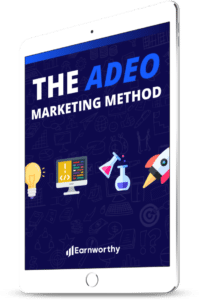Have you ever Googled something and started to scroll through the result pages? Of course. Most probably you looked at the first three to five results, read the title, the small description about it, bolded words or phrases you had entered in your search bar and then … there it is!
You found exactly the page you were looking for. The content answers your questions, it is well structured, helps you get the necessary knowledge or just shows you the solution to your problem.
If you had such experience, and I am sure you did, then congratulations! You have found a brand that uses inbound marketing and does it with precision.
Inbound marketing is a very effective way of attracting strangers to your website, and converting them into visitors, leads and customers, who eventually turn into loyal promoters of your brand. In other words, companies that use inbound marketing make people love their brand by talking about their problems, challenges, and goals, while offering solutions.
When done correctly, inbound marketing really works. But don’t just take my word for it. Learn the basics, starting with the content in this article. Afterwards, I highly recommend you check out HubSpot’s excellent overview as well and join communities such as Inbound.org.
Okay, back to the basics! In order to better understand what inbound marketing is and how it works, let’s take a look at the main pillars of the inbound methodology: Buyer Personas and the Buyer’s Journey.
What are buyer personas?
Let’s start by understanding what the phrase “buyer persona” means. Buyer personas are semi fictional representations of your ideal customers who have unique pain points, goals and challenges.
Your buyer personas should closely mimic real people with real lives, who are going to consume your products or services. This is what you should focus on when creating your website and content.
In order to attract your buyer personas, you should ask yourself questions like:
- What are their tension points?
- What are their challenges?
- What is their preferred language style, professional or casual?
- What kind of people are they when it comes to information digestion?
- How can you help them solve the issues that bother them?
Once you clearly understand and find answers to these questions, it becomes much easier to move forward and create content specifically for their needs. Cherish your buyer personas; they are the MVPs of your online business.
What does the buyer’s journey look like?
The second important thing you should pay attention to is the buyer’s journey. This is the logical continuation of the steps a visitor takes on your website to essentially become a customer and it’s your job to map it out as accurately as you can.
Let’s consider an example in order to better understand what this means. Suppose your company produces healthy and tasty snacks for kids, but here is the problem: No one has ever heard of you, and you need sales in order to grow. So what are you going to do to get people to buy from you?
Those who never heard of inbound marketing will most probably create a Facebook page and post pictures of their product 24/7, claiming that their product is the better than anything else out there, talking nonstop about their company and brand, without even bothering to think about their potential customers and their pain points.
In about three months they will probably run out of funds since nobody will even look at their posts, let alone click them. There are hundreds of companies out there in the same industry with the same offer, so why would they suddenly decide to use your product?
However, if you look at the problem from the inbound perspective, you will have it solved by 50% already.
Remember the first rule? That’s right! Create your buyer persona. Let’s assume your main persona is a mother of three kids who is looking for a healthier snack option to pack in school lunches. Let’s call her Jane. Yes, give your buyer personas real names.
Now this is where buyer’s journey comes into play. The buyer’s journey consists of 3 stages:
- Awareness
- Consideration
- Decision
All the stages are equally important and must be executed properly. Let’s take a closer look at each stage.
Awareness
The awareness stage is when your buyer persona starts to become aware of a problem that can no longer be denied and needs to be solved.
So Jane will most probably start searching the web for terms related to “healthy snacks for kids.” And we should have content in place that will provide suggestions, solutions and answers to her questions. It shouldn’t be something deep or too complicated, just some basic knowledge that will help her get a general idea of what she needs to do, in order to find the ideal snack for her children.
Consideration
Now, she has some sort of idea of what she should do, which broad categories of healthy snacks are out there, why healthy eating matters, etc. and she is ready to move to consideration stage. In this stage she starts researching all the available options, their pros and cons and evaluating them.
Who should help her in all of this? That’s right, we are always there, the brand that cares for her. We need to give her some more comprehensive knowledge about specific healthy snacks, what they’re made of, how easy they are to buy and pack in school lunches, etc.
Decision
Lastly, in the decision stage we want to close the sale with Jane. Now she probably has an idea of which top snacks she wants to buy from maybe a few different brands, but isn’t quite sure which single product or variety is best.
The best things that can now be offered are reviews from other customers, testimonials, demos, samples, and more personalized content to help her make a final choice.
Create content for people, not machines
If we succeed as the brand providing the most value for Jane and gaining her trust, she will most likely turn to us and become our customer. This is essentially what inbound marketing is about: educating your buyer personas, providing valuable content, and guiding them through the buyer’s journey correctly.
This can and should be done for all industries, by all companies, organizations, and brands.
There are many other things which must be taken into account in order to improve your inbound marketing strategy, like keyword research, search engine optimization, social media marketing, and more, but they all revolve around the same pillars: buyer personas and the buyer’s journey.
As far as the strategy goes, what it all boils down to is quite simple. You need to create content for people, not machines. It’s your job to really make each person understand and feel the benefits of your brand. If you can do that, customers will come back again and again, and they will tell the world about you and your offerings in a positive way.
That’s why inbound marketing works so well at attracting and delighting customers. It’s all about them and their needs. Keep that in mind as you create compelling content.
Was this information helpful? If you’re new to inbound marketing, did it provide you with enough information to get started? I’d love to hear your thoughts. Feel free to leave a comment below or on Twitter and let me know where you are at with your inbound marketing campaigns.





